Ernest Bazin's Roller Steamer: Why the Ship on Wheels Was a Failure
Categories: History | Technology
By Pictolic https://www.pictolic.com/article/ernest-bazin39s-roller-steamer-why-the-ship-on-wheels-was-a-failure.htmlAt the end of the 19th century, technical progress made a serious breakthrough. The first cars, trams, electric elevators, and telephones appeared. Almost every day, newspapers reported on new inventions. Engineers from different countries competed to come up with the craziest idea. Some of the new projects formed the basis for important mechanisms and technologies for people, while others went down in history as yet another useless and even dangerous invention. The latter included the high-speed steamboat by the French designer Ernest Bazin.

In 1896, French engineer Ernest Bazin claimed to have invented a vessel capable of reaching speeds of up to 60 km/h. This was a very bold claim, since even the fastest transatlantic steamships from Germany and England at that time could only travel at a speed of 35 km/h.
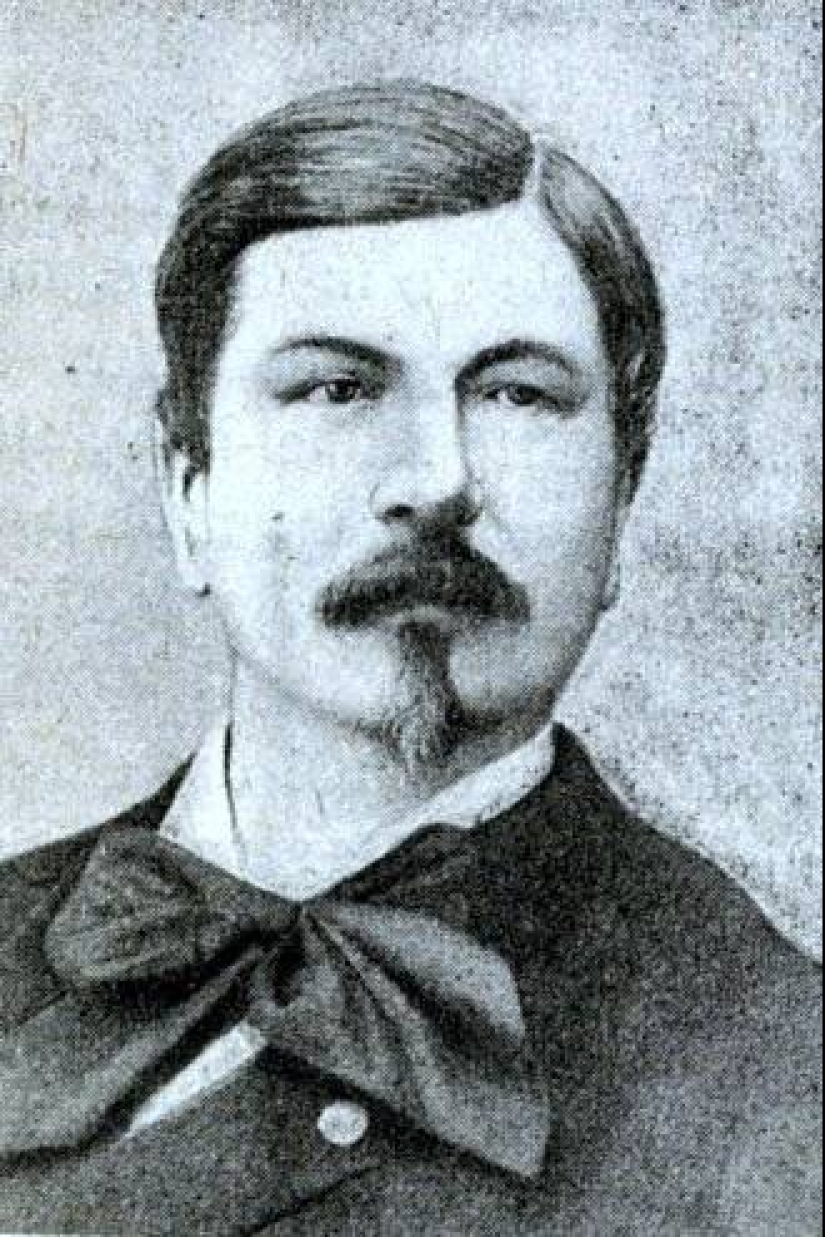
Although the speed declared by the designer seemed fantastic, he was still believed. The fact is that Bazin presented a completely new type of vessel, which was noticeably different from the already known models. His steamship resembled a platform mounted on six hollow wheels made in the form of a lentil. It was this unusual design that aroused interest and made people believe in his idea.
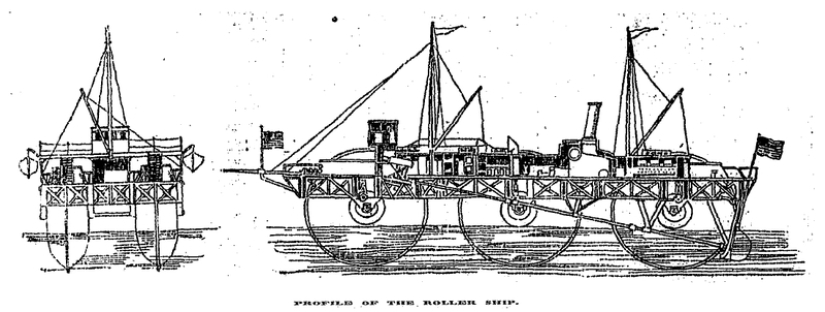
The inventor calculated that by raising the ship's hull on floats above the water, he would significantly reduce water resistance. This meant that steam engines would work more efficiently, and the steamship would develop a higher speed than usual. The wheels, which had a lens shape, assumed minimal contact with the water surface, and their rotation reduced the friction force even more.
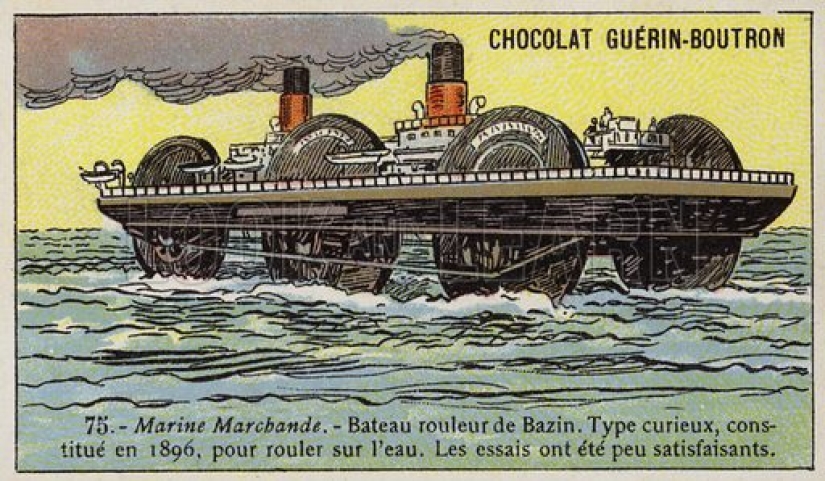
Back in 1880, the British Robert Fryer proposed a similar design. However, his experimental vessel, the Alice, equipped with triangular floats, turned out to be completely unsuitable for use. It took 12 years and 14 thousand pounds to refine the prototype, which was propelled by oars. Nevertheless, all efforts did not bring the desired result.
Ernest Bazin decided not to waste time on trifles and immediately designed a full-fledged vessel with steam engines. The 280-ton ship, named in his honor, was tested and improved for five years, spending more than 20 thousand pounds. Only after that did the inventor decide to present his creation to the general public. The presentation took place on August 19, 1896, at the pier in Saint-Denis, not far from Paris.
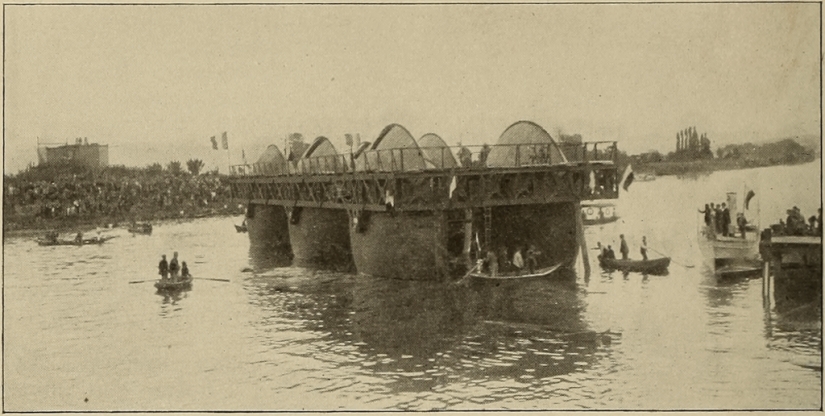
Spectators looked with interest at the unusual ship, raised above the water on three pairs of huge 10-meter float wheels. Each of them was 3.6 meters thick in the center, gradually thinning towards the edges. Under the weight of the ship, the wheels sank into the water by about a third. The hull of the steamship, measuring 40 by 12 meters, rose above the surface of the water by as much as 4 meters. The wheels were driven by several steam engines with a total capacity of 200 horsepower. In addition, the main steam engine with a capacity of 550 horsepower was connected to the propeller, adding additional thrust to the ship.
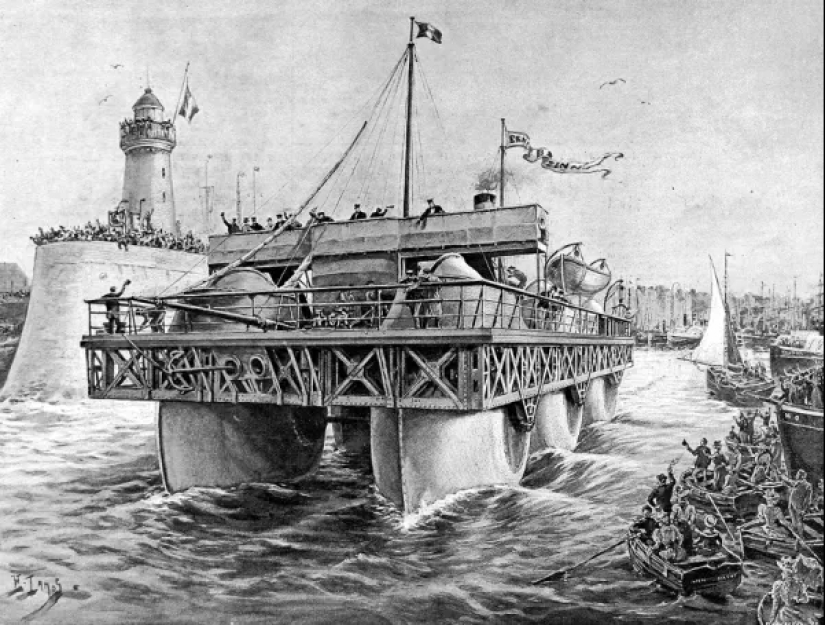
Before the tests began, Ernest Bazin announced that his vessel would first accelerate to 30 km/h, and then increase the speed to 35. According to the most daring calculations, the inventor hoped that the ship would be able to reach the 60 km/h mark. This meant that the vessel would move one and a half times faster than military cruisers and twice as fast as passenger steamers of the time. Such prospects sounded impressive and caused a lot of anticipation.
Among other things, Bazin assured the public of the incredible efficiency of his invention. According to his calculations, the ship could cross the Atlantic using only 800 tons of coal. For comparison, a regular liner of that time required 3 to 4 thousand tons. But already during the tests it became clear that the friction between the water and the wheels significantly exceeded the engineer's expectations. As a result, the steamship moved at a snail's pace, raising huge waves, and the fuel consumption exceeded the declared figure several times.
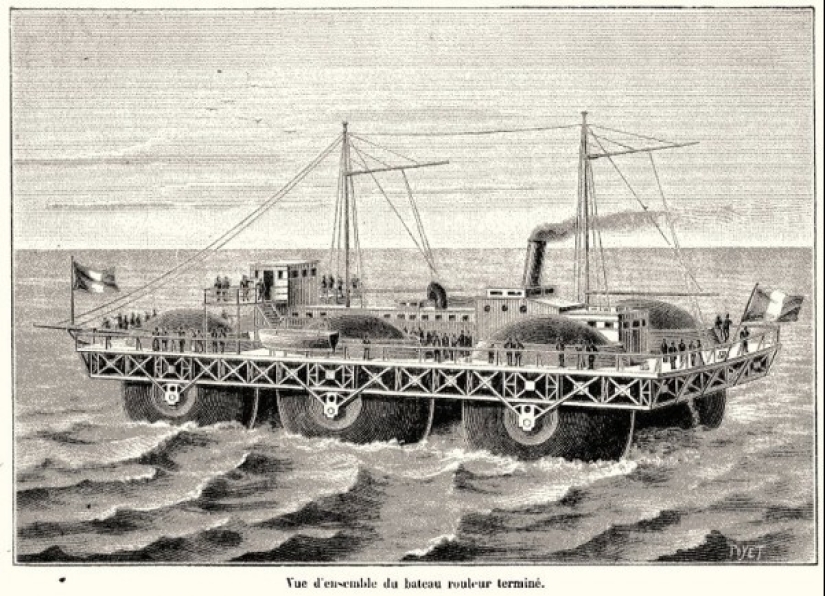
The Ernest Bazin steamship did not live up to expectations, but the engineer promised to take on the improvements. At the end of 1897, he announced that all the problems had been eliminated and that he would soon present an improved version of the vessel. According to him, the new model with four pairs of wheels was ready to set sail for America. Bazin even assured that the journey from Le Havre, France, to New York would take only 60 hours. However, reality, as usual, turned out to be more complex than forecasts.
Just a few weeks after this optimistic statement, on January 21, 1898, the engineer died unexpectedly. At the farewell ceremony for the inventor, the following words were heard:
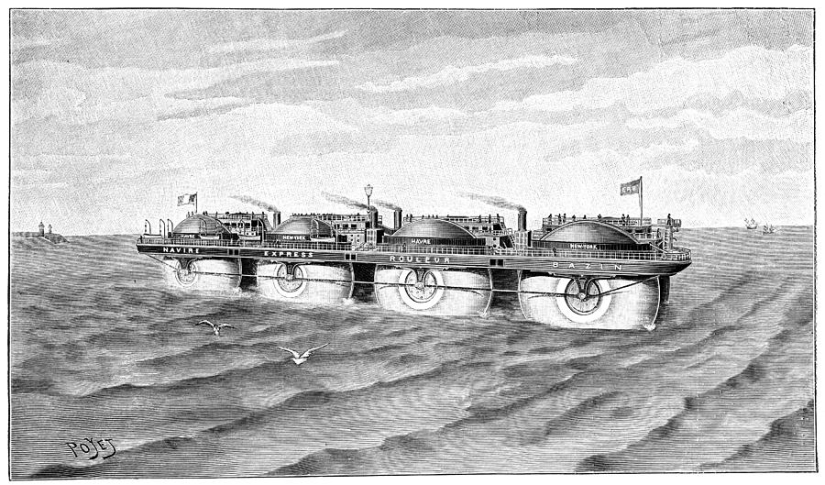
After Bazin's death, his descendants received the same 6-wheeled vessel, as well as a model of the 8-wheeled vessel and mountains of drawings. No one else worked on the unusual steamship, and in 1899 the Ernest Bazin vessel was sold at auction. The new owner sawed it up for scrap metal.
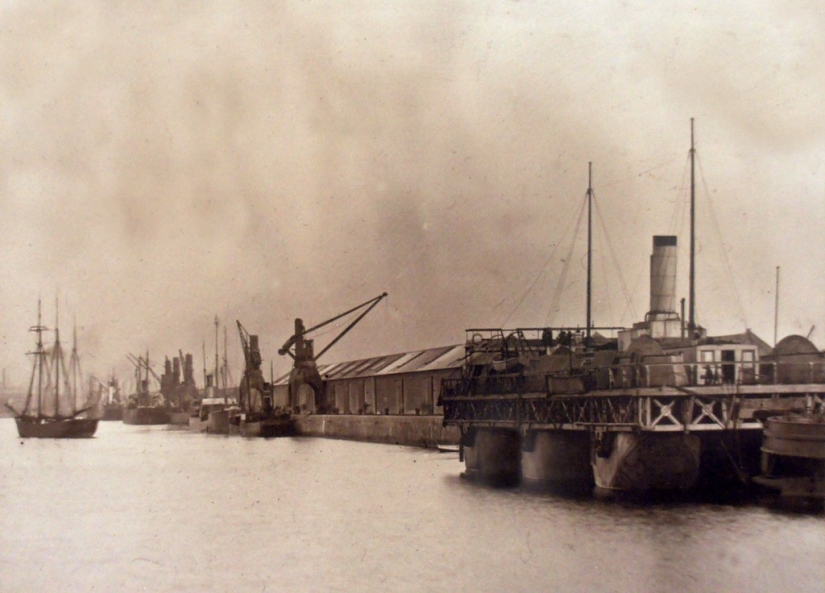
The Frenchman's invention continued to excite the minds of designers for a long time, but the matter never progressed beyond the creation of prototypes. In the middle of the 20th century, swamp-going vehicles with huge wheels appeared, which are still used today. They move through marshy terrain and are able to float, using large tires as floats. However, their speed on water is extremely low, which once again confirms the futility of Bazin's idea.

The story of Ernest Bazin shows that even the most daring engineering ideas can face insurmountable difficulties. But perhaps if the technology of that time had been more advanced, his vessel would have truly revolutionized navigation? What modern inventions do you think seem useless to us today, but could change the world in the future?
Recent articles

At the end of 1963, The Beach Boys were playing on the radio in America, the United States was gradually being dragged into the ...

The Celestial Empire is one of the most visited countries in the world. Every year this amazing country is visited by millions of ...

Let's find answers together to the most important questions of our time that torment citizens. For example, we simply have to find ...